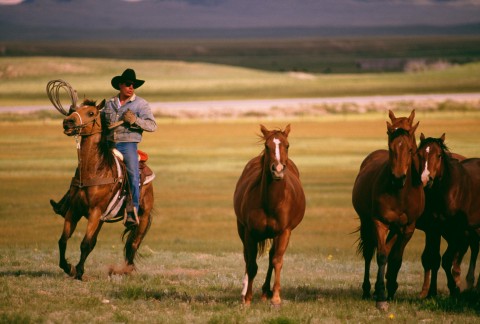Greeting another is one of the most important things we do in social interaction. Did you know that even cats and dogs greet? They touch their noses together, even with other animals!
Therefore, greeting someone in their own language is probably the best way to win immediate favor. Nearly every language has different ways to say hello, depending on what time of the day it is, what the situation is, and also who you address. Greetings can also differ according to dialect, such as American English vs British English, etc.
For the purpose of the article, we will focus on American greetings. We will only look at greetings when you meet someone, not at ways to say goodbye.
So, let’s look at some of the many ways to say hello in American English.
1. Formal Greetings
As the name suggests, formal greetings are used in more formal situations. This would be when you address someone you don’t know well, or who is senior to you in some way.
You would use this, for instance, when addressing your boss, or your elderly neighbour or a complete stranger who is older than you.

1- Good morning / Good afternoon / Good evening
Other than these, there are not many formal or polite ways to say hello in English.
Literally, this greeting is a way to wish someone well. It is a short way of saying: “I wish you may have a good morning/afternoon/evening”.
How & When To Use It
- Say “Good morning” any time after sunrise.
- Use “Good afternoon” any time after 12pm.
- Use “Good evening” any time after sunset.
As mentioned, this is a polite way to greet someone who is senior to you in some way. It’s not an error to greet a friend like this though, so don’t worry if you do! Further, you may or may not wish to offer your hand for a handshake if you meet the person for the first time.
If you choose, you could follow this greeting with a phrase such as: “How are you?” This means you’re asking after the person’s wellbeing. It’s a short way of asking “How are you doing?”
You could also follow with: “How have you been?” This phrase means the same as “How are you?”, but you would use it only if you have met the person before. It is short for “How have you been since we last saw one another?”
Another phrase with which to follow this greeting, is “It’s nice to see you again”. This you also say only to someone you already know or have met before.
What are the formal ways of greeting in your language?
Informal greetings are much more abundant in English.
2. Informal Greetings
Informal greetings are usually OK for casual situations, and is used upon meeting or seeing someone.
1- Hello!
Hello is one of older greetings around, even though it wasn’t originally used as such. It’s said to come from the German word “Hoi”, which was a way to attract someone’s attention, or to express surprise. Such as in: “Hoi! Where are you going?” or “Hoi, what is this?!”
Hello was initially used in the same way, but over time, it turned into a way to greet someone. Previously, in western countries, it was polite for men to also lift their hats in greeting!

How & When To Use It
- It is suitable for use any time of the day.
- It’s certainly the most neutral and simplest way of greeting someone. It’s not completely unsuitable to use as a more formal greeting, such as when you address someone who is senior to you in some way.
- If you meet a person for the first time, ”Hello” is usually followed by a phrase such as: “It’s nice to meet you!”
- When you meet someone new, you can also offer your hand for a handshake.
2- Hi / Hey / Hi there!
This casual greeting is well known and popular around the world. You can use it in all informal situations, irrespective of who you address.
How & When To Use It
- This is a more casual way of saying hello, even when you meet new people. You can offer you hand for a handshake, if you choose.
- If you need a stranger’s attention, such as a shop assistant, you don’t need to shake hands with them. You can just say: “Hi there!”
- You can also say ”Hey!” when you run into a friend or someone you met before.
- “Hi there!” is particularly handy if you don’t know or cannot remember someone’s name!
3- Howdy!
Of all the different ways of saying hello, this one certainly brings up images of cowboys, belt buckles and the famous southern American drawl! It is said to have originated in Texas as an informal greeting. The word ”Howdy” is a contraction of the more formal greeting phrase: “How do you do?”, and is a way to ask after someone’s wellbeing. It has become so popular that a Texan university uses it as a slogan.

How & When To Use It
Its use is pretty similar to “Hi”, in the sense that normally no answer is expected.
When you meet someone for the first time, or bump into a friend somewhere, this is an acceptable form of greeting in any casual situation. You could also offer your hand for a handshake.
If you really want to do it the Texan way, greet a group of friends with “Howdy, y’all!” Howdy can be used any time of the day. However, use it mostly with peers or older people you have already met and are on friendly terms with.
4- Hey, what’s up?!
This greeting serves a double purpose. It’s a way of saying hello, and it’s also a way of asking about what might be happening.
According to StackExchange, “What’s up?” has old origins: “In a letter written in 1838, the novelist Elizabeth Gaskell wrote I did not mention a word to Lucy but she must have guessed something was ‘up’“.
The phrase was made popular and probably widely known by the cartoon character, Bugs Bunny, with his signature phrase: “What’s up, Doc?” The contraction “Wassap?” is even more casual.
How & When To Use It
This phrase can be used any time of the day or night.
This way of saying hello is probably best used with people you know. That, or if you specifically want to know what’s going on with someone or something.
If you are friends with them, and your relationship is relaxed and casual, this is a suitable way to greet both young and old people.
5- Morning! / Evening!
This is the casual version of ”Good morning” and ”Good evening”.
How & When To Use It
As previously pointed out, these forms of greeting are dependent on the time of day. After sunrise, till around noon (12pm), you will greet someone with “Morning!”. From around 6pm, you will say “Evening!”
It is fairly safe to greet anyone this way, no matter of their age. You might not want to meet a dignitary or royalty like this, though.

6- Hey, long time no see!
This phrase is thought to have originated from pidgin English, and some consider it offensive and racist. However, it is widely used across the Americas today, and it literally means you haven’t seen someone for a long time.
It seemed to have appeared the first time in literature in W.F. Drannan’s book, Thirty-one Years on Plains, which was published in 1901: ‘When It we rode up to him he said: ‘Good mornin. Long time no see you’.The speaker is an American Indian. However, the phrase became popular only the last ten years or so.
How & When To Use It
When you haven’t seen a friend for a long time, this is an appropriate greeting.
It is perhaps more suitable to address your younger friends this way. That’s not to say that older people will necessarily be offended—if you know them well, and you have a more relaxed friendship, it should be fine!
7- Hi, how’s it going?
This greeting is an informal version of “How are you?” or “How have you been?” It’s also a different way of asking: “What’s up?”
How & When To Use It
Probably best used for your younger friends, or when you’re greeting a group of friends in a general sort of way. Often, when friends meet up, the ”Hi” falls away.
This is maybe not the best greeting if you really want to know what is going on in someone’s life. It’s simply an expression or a rhetorical question to which the speaker usually doesn’t expect any reply other than “Fine, thanks!”
8- Hey, how’s everything?
This greeting is a contraction of “How’s everything going?” It means the same as “How’s it going?” and is used in the same way.
Here, the ”Hey” also falls away when friends who know one another well meet!

9- Yo!
”Yo!” was first used in the 1400s as an exclamation of incitement or warning. Apparently it originated among sailors. In the 1950s in the U.S., it became popular as a way to say ‘Hi!”’, or to show surprise. Much later, in the African-American community, it changed into an exclamation, “following or punctuating an utterance for emphasis or as a general conversational filler”, according to StackExchange.
How & When To Use It
- This is a very informal greeting! Best use it only with your friends of the same age, and younger.
- An appropriate response is usually also a “Yo!”
3. Why Choose EnglishClass101 To Teach You The Best Ways To Say Hello?
Studying English through EnglishClass101 has many advantages!
We have many free resources to help you learn English easily! For instance, if you sign up now, you get access to:
- New audio and video lessons every week.
- A free online course with a lifetime access. The course includes free audio books and video lessons, plus vocabulary building tools.
- eBooks with lessons you can listen to and read in more than 200 pages of transcript, grammar and sample sentences!
- Podcasts on iTunes that will have you speaking after the very first lesson!
- Lively online communities on Facebook, Twitter, Instagram and YouTube!
What’s not to love?! Learn so much more than the ways to say hello in English!











